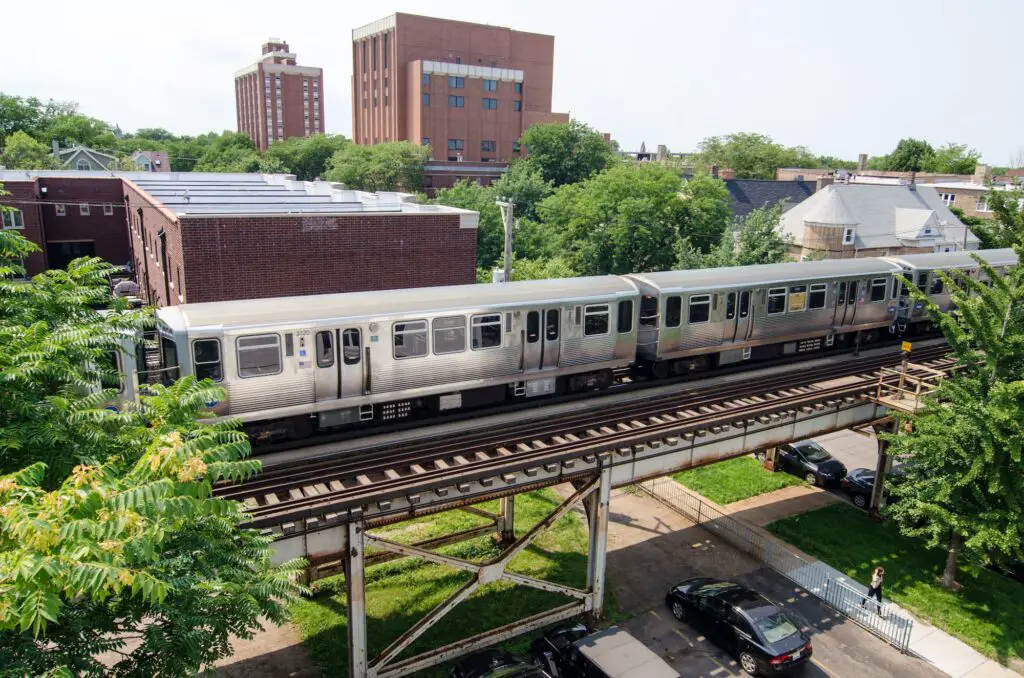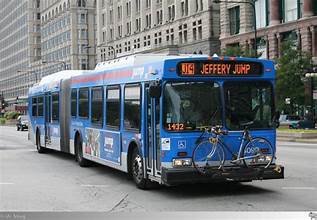Discover Horner Park Chicago: A 55-Acre Urban Oasis
Perhaps overlooked yet nestled in Chicago’s Irving Park neighborhood, Horner Park welcomes all. Community engagement and a love for green spaces come together in perfect harmony at this charming city park. Imagine spending the day in a sprawling oasis that offers something for everyone – from thrill-seekers to nature lovers. Whether you love sports, nature, or just want a peaceful retreat from the city, Horner Park Chicago has something for you.
Stepping into Horner Park, you’re greeted by expansive greenery. Discover your new favorite hangout in the park, where big open spaces and Activity Central wrap around each other like old friends. From well-maintained sports fields to serene natural areas, every corner invites exploration and enjoyment.
Table Of Contents:
- A Hub for Sports and Recreation
- Nature’s Retreat in the City
- A Park for All Seasons
- Community Engagement and Cultural Celebrations
- Accessibility and Visitor Information
- FAQs about Horner Park Chicago
- Conclusion
A Hub for Sports and Recreation
Horner Park Chicago is a paradise for sports enthusiasts, boasting impressive facilities for various athletic pursuits. According to the Chicago Park District , the park features:
- Nine softball fields
- Two football/soccer fields
- Four basketball courts
- Five tennis courts
These facilities are hubs of activity year-round. Courts and fields teem with activity as locals gather for friendly competition, pickup games, and solo practice sessions. The variety of sports options ensures there’s always a game to join or a new skill to learn.
Night Baseball: A Community Tradition
Horner Park Chicago is unique for its night baseball facilities. Three senior baseball diamonds have lights, allowing evening games that extend playing hours and create a magical atmosphere. Local baseball leagues have fallen in love with Horner Park, and it’s easy to see why – the league’s strong community of players and fans is built around this fantastic feature.
Nature’s Retreat in the City
Beyond sports, Horner Park Chicago offers a remarkable natural area that contrasts with the manicured playing fields. Stepping into this natural area, the calming atmosphere immediately envelops you, making it the ideal spot to re-center and recharge.
You’ll find an undeniable sense of calm at Horner Park Natural Area, where the beauty of the great outdoors shines bright. Tucked away, a quiet marvel is waiting for someone to stumble upon its charm.
Wedged between urban landscapes, Horner Park Natural Area preserving 13 acres of unbridled nature within city limits. In this rejuvenated prairie land and oak savanna, every bend in the trail promises a new visual feast for visitors to savor.
As you wander along the half-mile of trails, you’ll encounter:
- Native wildflowers
- Indigenous shrubs and trees
- A diverse array of wildlife, including butterflies and migrating birds
This natural oasis is both beautiful and ecologically significant. This deliberate makeover has upgraded the urban jungle, furnishing critical oases for unsuspecting critters, from feisty raccoons to wily hawks, seeking refuge and feasting on abundance. One key way urban parks benefit the environment is by actively conserving it.
Community Involvement in Conservation
Community involvement is key to the natural area’s success. Since 1994, Riverbank Neighbors has invited residents to help maintain this precious ecosystem. By reclaiming their natural heritage, community members have unwittingly stumbled upon something far greater – a sense of purpose, created by working hand-in-hand to safeguard the land that has come to define their collective identity.
A Park for All Seasons
Horner Park Chicago comes alive year-round, each season bringing unique charm and activities. Two can’t-miss events stand out on the park’s calendar: a seasonal pumpkin patch and a paws-itively entertaining Easter egg hunt, geared to get visitors in the mood for fun and games.
Spring: Renewal and Recreation
As the weather warms, Horner Park flourishes. The natural area bursts with color as wildflowers bloom, and the sports fields fill with players. This park is the place to be, clearly a fan favorite. A dog park is where community happens – paws Scrabble-mix on the grass, exhausted dogs curled up in the shade, and conversations that forge lifelong friendships between their human companions. As the thermometer rises, canines and their companions revel in the mild weather, beckoning a surge in outdoor activity.
Summer: The Heart of Activity
Summer is when Horner Park Chicago truly shines, becoming a hub of community activity. Saturday mornings at the park are reserved for the vibrant farmers market, just one of many events that bring the community together.
Embedded in local lore since ’85, the John O’Connell Summer Concert Series continues to orchestrate unforgettable nights under the stars, beckoning music lovers from near and far to experience the buzz.
Fall: A Tapestry of Colors
As summer transitions to fall, Horner Park transforms into autumnal hues. With nature’s transition to warm colors, the open area suddenly gains a serene charm, turning it into a hot spot for taking slow walks and sharing bountiful picnics. With the cooler weather comes a cherished fall ritual – the park’s pumpkin patch festival, where the excitement is palpable and family memories are made.
Winter: Serene Beauty
Even in winter, Horner Park Chicago remains a destination for outdoor recreation. Break out the hot cocoa and hand warmers – winter’s blanket of snow has turned the great outdoors into a winter sports haven, where enthusiasts of all ages can speed down hills on sleds or trek through the powder on snowshoes.
Imagine vibrant festivals, lively traditions, and a shared sense of belonging – that’s the magic we’re dedicated to creating.
There’s more to Horner Park than swings and slides – it’s a dynamic hub where families, artists, and activists coalesce, reflecting the multifaceted essence of Chicago’s urban soul. Age is just a number at the park, where kids, teens, adults, and seniors can all find their own brand of fun.
Honoring Native American Heritage
In 2018, Horner Park hosted Riverfest, an event that honored Native American culture . The park’s dedication to honoring the area’s rich Native American history was on full display during this festive occasion.
Buried within the park’s scenic landscape lies an emerging narrative, alive with the poignant moments, triumphs, and struggles of Native American people, waiting to be uncovered by curious visitors through an inspired art project. According to the Chicago Tribune , an artist is creating an effigy mound resembling a coiled snake. This installation will be part of the Northwest Portage Walking Museum, joining a similar mound in Schiller Park.
The artist, Santiago X, told the Chicago Tribune, “As far as this earthworks project, it’s an opportunity for our communities to build some beauty and create spaces that celebrate a coming together to create more equity; to elevate the voice of the ancestral peoples, the presence of Indigenous peoples together—because we’re not doing it alone.”
Community-Driven Improvements
Community involvement drives Horner Park Chicago’s ongoing evolution. From upgrading facilities to simply sprucing up the scenery, the Horner Park Advisory Council has dedicated itself to elevating the overall park experience since its inception in 1988, all to ensure a better tomorrow for this cherished community hub. It’s a regular powwow at the Horner Park fieldhouse, where locals congregate monthly to dish out concerns, brainstorm, and watch their community take shape.
Accessibility and Visitor Information
Horner Park Chicago is designed to be accessible. Here’s what you need to plan your visit:
Location and Directions
The park is at 2741 W. Montrose Ave., Chicago, IL 60618. It’s conveniently located near public transportation, making it easy to get to. If you’re using public transportation, visit www.transitchicago.com for route information. For driving directions, use this link .
Park Hours and Facilities
Horner Park is open daily from 6am to 11pm. The park’s got all the essentials and then some, featuring:
- Picnic groves
- Playgrounds
- Public restrooms
- Drinking fountains
For more about park facilities and programs, visit the official Chicago Park District Horner Park website .
FAQs about Horner Park Chicago
What is the history of Horner Park?
Horner Park was established in the early 20th century as Chicago created more green spaces. It’s named after Henry Horner, Illinois’ first Jewish governor (1933-1940). As the neighborhood has grown, so has the park – adapting to meet the evolving needs of the people who call it home.
What are the demographics of Horner Park?
Horner Park is in the Irving Park neighborhood, known for its diverse population. A hearty blend of families, young career-builders, and folks who’ve seen it all come together in this neighborhood, mirroring the patchwork cultural fabric that makes Chicago so special.
What is Edison Park known for?
While this question is about Edison Park, not Horner Park, it’s worth noting that Edison Park is a Chicago neighborhood known for its small-town feel. Occupying a prime spot in the urban landscape, Horner Park wows visitors with its substantial open areas and sensational recreational opportunities.
How long is the Horner Park Loop?
The main loop trail in Horner Park is about 1.5 miles long. Circle the park on this inviting path, perfect for a leisurely stroll, a brisk jog, or a fun bike ride. Amidst the sprawling natural area, a network of shorter trails beckons, promising a richer, more grounded experience.
The final stretch! Having made it this far, let’s recollect the key points that mattered most and get ready to move forward with confidence.
At Horner Park, the boundaries between recreation, nature, and community blur, creating an urban oasis where Chicagoans can connect, unwind, and engage with their surroundings. Imagine a place where jogging trails border lacrosse fields, and playgrounds blend seamlessly into wooded areas – welcome to the park, where the great outdoors await! You can play softball, enjoy the farmers market, or relax and watch the seasons change.
Horner Park’s pulse beats strongest in its community spirit, where neighbors become friends and memories are made. Constantly updating its vibe, this park stays on the move while holding on to its heritage. Step into Horner Park and trade in the concrete jungle for a refreshing dose of nature, no matter if you call Chicago home or are just passing through. In the midst of concrete and steel, there’s a peaceful retreat waiting to be found – give it a chance, and it might just become your Chicago sweet spot.
Discover Horner Park Chicago: A 55-Acre Urban Oasis Read More »



